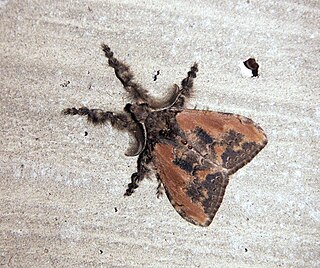
Olene mendosa, the brown tussock moth or hairy tussock moth, is a moth of the family Erebidae. The species was first described by Jacob Hübner in 1823. It is found in India, Bangladesh, Sri Lanka, Indonesia, Taiwan, Thailand and Australia.

Delgamma is a monotypic moth genus of the family Noctuidae erected by Frederic Moore in 1885. Its only species, Delgamma pangonia, the strawberry cutworm, was first described by Achille Guenée in 1852.

Tephriopis is a monotypic moth genus of the family Erebidae. Its only species, Tephriopis divulsa, was first described by Francis Walker in 1865.

Laelia is a genus of tussock moths in the family Erebidae. The genus was described by Stephens in 1828. Species are well distributed throughout Europe, Japan, China, India, Sri Lanka, Myanmar and Java.
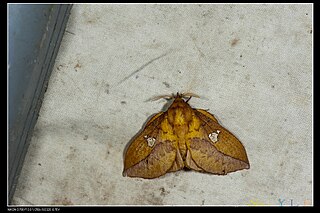
Euthrix laeta is a moth of the family Lasiocampidae first described by Francis Walker in 1855.
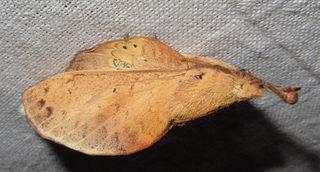
Gastropacha pardale, the brown lapped moth, is a moth of the family Lasiocampidae. The species was first described by Francis Walker in 1855.
Streblote dorsalis is a moth of the family Lasiocampidae first described by Francis Walker in 1866. It is found in India, Sri Lanka, the Philippines, Borneo, Indonesia and Java.
Suana concolor is a moth of the family Lasiocampidae first described by Francis Walker in 1855. It is found in India and Sri Lanka, to South China, Java, Borneo and the Philippines.
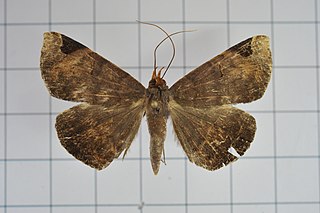
Mecodina praecipua is a moth of the family Noctuidae first described by Francis Walker in 1865.
Radara subcupralis is a moth of the family Noctuidae first described by Francis Walker in 1866.
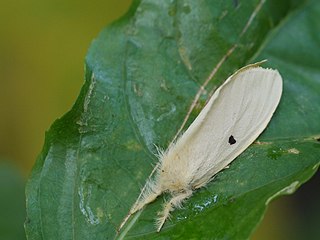
Euproctis lunata, the castor hairy caterpillar, is a moth of the family Erebidae. The species was first described by Francis Walker in 1855. It is found in India, Pakistan, Sri Lanka and Thailand.
Nygmia icilia is a moth of the family Erebidae first described by Caspar Stoll in 1790. It is found in India and Sri Lanka.
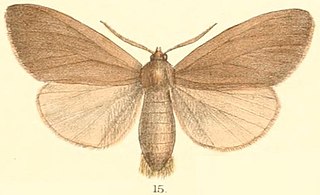
Laelia testacea is a moth of the family Erebidae first described by Francis Walker in 1855. It is found in India and Sri Lanka.
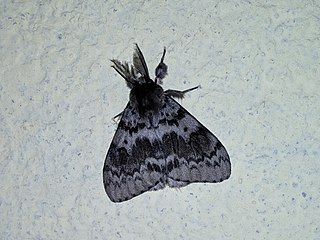
Lymantria incerta is a moth of the family Erebidae first described by Francis Walker in 1855. It is found in India and Sri Lanka.
Lymantria marginata is a moth of the family Erebidae first described by Francis Walker in 1855. It is found in India, Bangladesh, Sri Lanka and Thailand.

Achrosis rondelaria is a moth of the family Geometridae first described by Johan Christian Fabricius in 1775. It is found in India, Sri Lanka, Myanmar, Java and Nepal.

Amblychia hymenaria is a moth of the family Geometridae first described by Achille Guenée in 1858. It is found in India, Singapore, Sundaland, Sulawesi, Nepal, Bangladesh, Malaysia and may be in Sri Lanka.
Chorodna strixaria is a moth of the family Geometridae first described by Achille Guenée in 1858. It is found in India, Vietnam, Sulawesi, the Philippines, the Moluccas, New Guinea, Australia and Sri Lanka.

Polytela gloriosae, the Indian lily moth or lily caterpillar, is a moth of the family Noctuidae. The species was first described by Johan Christian Fabricius in 1781. It is found in Sri Lanka, India and probably in Indonesia.
Callopistria apicalis is a moth of the family Noctuidae first described by Francis Walker in 1855. It is found in the Indian subregion, Sri Lanka, Sundaland and the Philippines.












